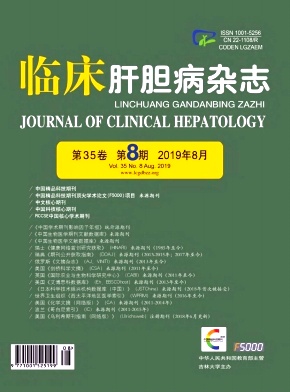|
[1] WAGNER KH, SHIELS RG, LANG CA, et al. Diagnostic criteria and contributors to Gilbert's syndrome[J]. Crit Rev Clin Lab Sci, 2018, 55 (2) :129-139.
|
|
[2] STRASSBURG CP. Hyperbilirubinemia syndromes (Gilbert-Meulengracht, Crigler-Najjar, Dubin-Johnson, and Rotor syndrome) [J]. Best Pract Res Clin Gastroenterol, 2010, 24 (5) :555-571.
|
|
[3] YANAGI T, NAKAHARA S, MARUO Y. Bilirubin uridine diphosphate-glucuronosyltransferase polymorphism as a risk factor for prolonged hyperbilirubinemia in Japanese preterm infants[J]. J Pediatr, 2017, 190:159-162.
|
|
[4] HUANG MJ, KUA KE, TENG HC, et al. Risk factors for severe hyperbilirubinemia in neonates[J]. Pediatr Res, 2004, 56 (5) :682-689.
|
|
[5] YANG H, WANG Q, ZHENG L, et al. Clinical significance of UGT1A1 genetic analysis in Chinese neonates with severe hyperbilirubinemia[J]. Pediatr Neonatol, 2016, 57 (4) :310-317.
|
|
[6] CHIDDARWAR AS, D'SILVA SZ, COLAH RB, et al. Genetic variations in bilirubin metabolism genes and their association with unconjugated hyperbilirubinemia in adults[J]. Ann Hum Genet, 2017, 81 (1) :11-19.
|
|
[7] SKIERKA JM, KOTZER KE, LAGERSTEDT SA, et al. UGT1A1genetic analysis as a diagnostic aid for individuals with unconjugated hyperbilirubinemia[J]. J Pediatr, 2013, 162 (6) :1146-1152.
|
|
[8] EHMER U, KALTHOFF S, FAKUNDINY B, et al. Gilbert syndrome redefined:A complex genetic haplotype influences the regulation of glucuronidation[J]. Hepatology, 2012, 55 (6) :1912-1921.
|
|
[9] ERLINGER S, ARIAS IM, DHUMEAUX D. Inherited disorders of bilirubin transport and conjugation:New insights into molecular mechanisms and consequences[J]. Gastroenterology, 2014, 146 (7) :1625-1638.
|
|
[10] FATA CR, GILLIS LA, PACHECO MC. Liver fibrosis associated with Crigler-Najjar syndrome in a compound heterozygote:A case report[J]. Pediatr Dev Pathol, 2017, 20 (6) :522-525.
|
|
[11] BARI爦Z, ZAY F, USTA Y, et al. Liver cirrhosis in a patient with Crigler Najjar syndrome[J]. Fetal Pediatr Pathol, 2018, 37 (4) :301-306.
|
|
[12] MITCHELL E, RANGANATHAN S, McKIERNAN P, et al. Hepatic parenchymal injury in Crigler-Najjar type I[J]. J Pediatr Gastroenterol Nutr, 2018, 66 (4) :588-594.
|
|
[13] SUN L, LI M, ZHANG L, et al. Differences in UGT1A1 gene mutations and pathological liver changes between Chinese patients with Gilbert syndrome and Crigler-Najjar syndrome type II[J]. Medicine (Baltimore) , 2017, 96 (45) :e8620.
|
|
[14] SERVEDIO V, D'APOLITO M, MAIORANO N, et al. Spectrum of UGT1A1 mutations in Crigler-Najjar (CN) syndrome patients:Identification of twelve novel alleles and genotypephenotype correlation[J]. Hum Mutat, 2005, 25 (3) :325.
|
|
[15] MARUO Y, NAKAHARA S, YANAGI T, et al. Genotype of UGT1A1and phenotype correlation between Crigler-Najjar syndrome typeⅡand Gilbert syndrome[J]. J Gastroenterol Hepatol, 2016, 31 (2) :403-408.
|
|
[16] TOLOSA L, LPEZ S, PAREJA E, et al. Human neonatal hepatocyte transplantation induces long-term rescue of unconjugated hyperbilirubinemia in the Gunn rat[J]. Liver Transpl, 2015, 21 (6) :801-811.
|
|
[17] CHEN Y, LI Y, WANG X, et al. Amelioration of hyperbilirubinemia in Gunn rats after transplantation of human induced pluripotent stem cell-derived hepatocytes[J]. Stem Cell Reports, 2015, 5 (1) :22-30.
|
|
[18] SPITZHORN LS, KORDES C, MEGGES M, et al. Transplanted human pluripotent stem cell-derived mesenchymal stem cells support liver regeneration in Gunn rats[J]. Stem Cells Dev, 2018.[Epub ahead of print]
|
|
[19] MONTENEGRO-MIRANDA PS, PICHARD V, AUBERT D, et al. In the rat liver, adenoviral gene transfer efficiency is comparable to AAV[J]. Gene Ther, 2014, 21 (2) :168-174.
|
|
[20] BORTOLUSSI G, ZENTILLIN L, VANKOVA J, et al. Lifelong correction of hyperbilirubinemia with a neonatal liverspecific AAV-mediated gene transfer in a lethal mouse model of Crigler-Najjar syndrome[J]. Hum Gene Ther, 2014, 25 (9) :844-855.
|
|
[21] PORRO F, BORTOLUSSI G, BARZEL A, et al. Promoterless gene targeting without nucleases rescues lethality of a Crigler-Najjar syndrome mouse model[J]. EMBO Mol Med, 2017, 9 (10) :1346-1355.
|
|
[22] WU L, ZHANG W, JIA S, et al. Mutation analysis of the ABCC2 gene in Chinese patients with Dubin-Johnson syndrome[J]. Exp Ther Med, 2018, 16 (5) :4201-4206.
|
|
[23] van der SCHOOR LW, VERKADE HJ, KUIPERS F, et al. New insights in the biology of ABC transporters ABCC2 and ABCC3:Impact on drug disposition[J]. Expert Opin Drug Metab Toxicol, 2015, 11 (2) :273-293.
|
|
[24] van de STEEG E, STRNECKY V, HARTMANNOVH, et al.Complete OATP1B1 and OATP1B3 deficiency causes human Rotor syndrome by interrupting conjugated bilirubin reuptake into the liver[J]. J Clin Invest, 2012, 122 (2) :519-528.
|
|
[25] STICOVA E, LODEREROVA A, van de STEEG E, et al. Down-regulation of OATP1B proteins correlates with hyperbilirubinemia in advanced cholestasis[J]. Int J Clin Exp Pathol, 2015, 8 (5) :5252-5262.
|
|
[26] D'SILVA S, COLAH RB, GHOSH K, et al. Combined effects of the UGT1A1 and OATP2 gene polymorphisms as major risk factor for unconjugated hyperbilirubinemia in Indian neonates[J]. Gene, 2014, 547 (1) :18-22.
|
|
[27] LUZZATTO L, ARESE P. Favism and glucose-6-phosphate dehydrogenase deficiency[J]. N Engl J Med, 2018, 378 (1) :60-71.
|
|
[28] MOIZ B, NASIR A, KHAN SA, et al. Neonatal hyperbilirubinemia in infants with G6PD c. 563C> T variant[J]. BMC Pediatr, 2012, 12:126.
|







 DownLoad:
DownLoad: